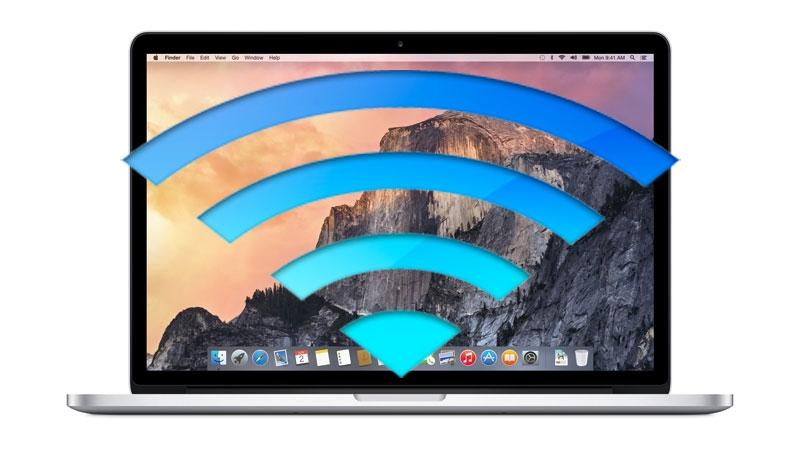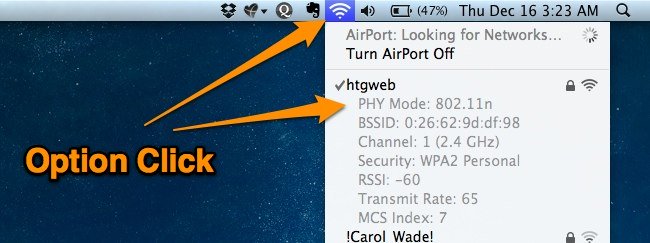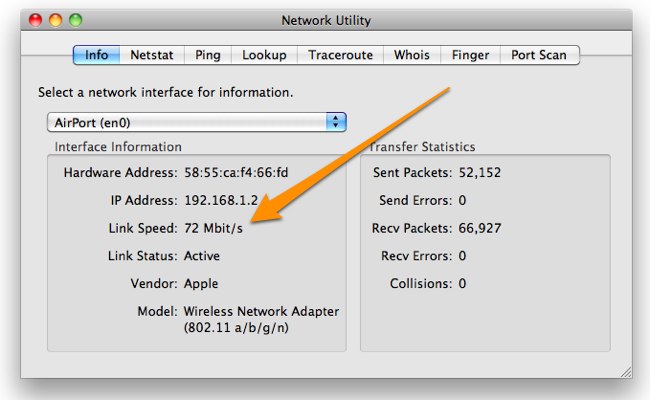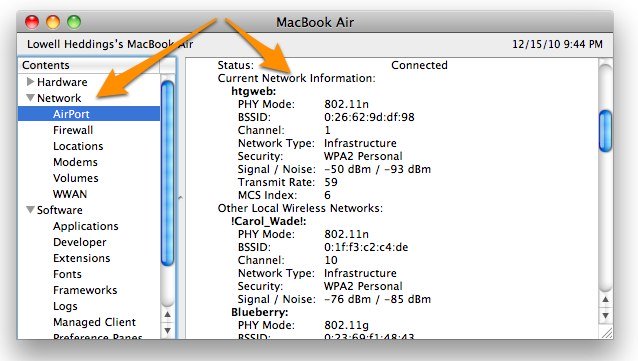How to See Your Current Wifi Connection Speed in Mac OS X

Since I use my MacBook Air, I was amazed by how to make some of the simplest tasks in Mac OS X that I would normally do from my Windows laptop-like show the connection speed for the current WiFi. So I’m using 802.11ac or not?
Usually, on my Windows 7 laptop, all I have to do is hover over the icon or pop up the list you can even enter the network details and see just about every piece of data network, all from the system tray. Here’s how to see your current login information on your Mac.
Through the WiFi icon in the Menu Bar (Using Option-Click)
As pointed anon in the comments, you can simply press down the Option key while clicking the menu icon bar to your airport, and it will show you the extended information in the contextual display.
> MacOS X ⇒ WiFi info with ALT+Click on WiFi icon

Very useful. Thanks!
Using the Network Utility
You can use the utility network using Cmd + Space to pull up the Spotlight search box and type in, or you can navigate through your Applications -> Utilities folder to find it.
Select under the “Info” tab, select your wireless device from the drop-down list and you will see your speed under “Speed Link”.
Note: Sometimes Network Utility does not display your WiFi connection. Close the application and try again.

Once you are there you can see the current connection speed by looking at the Speed Link, which will show the actual rate of data you use. This rate will change as you move around your home, so if you are away from the router, the rate will change, and if you’re closer, it will get more.
Terminal (Command Line)
This is more for those who prefer the Terminal, and honestly, it took me a while to find this one.
Open a Terminal (Applications ⇒ Utilities ⇒ Terminal) and type:
/System/Library/PrivateFrameworks/Apple80211.framework/Versions/Current/Resources/airport -I
The output should show something like this, where you see “lastTXRate” and “maxRate” indicating the speed values for your WiFi.
System/Library/PrivateFrameworks/Apple80211.framework/Versions/Current/Resources/airport -I
agrCtlRSSI: -49
agrExtRSSI: 0
agrCtlNoise: -95
agrExtNoise: 0
state: running
op mode: station
lastTxRate: 130
maxRate: 144
lastAssocStatus: 0
802.11 auth: open
link auth: wpa2-psk
BSSID: 2c:85:7e:4a:b3:ca
SSID: ChristelWIFI
MCS: 15
channel: 1
If you tend to use this command-line statement more often, please consider making a symbolic link, so you can simply type “airport” on the command line without having to type the full path.
This can be done as such:
cd /usr/sbin
sudoln-s/System/Library/PrivateFrameworks/Apple80211.framework/Versions/Current/Resources/airport
Using the System Information utility

You can open the application Spotlight to search system information or Applications -> Utilities. Once you’re there, navigate to Network ⇒ Wi-Fi or network ⇒ Airport depending on the age of your MacBook and OS X version can be, and you will see the current connection on the right. In my case, I’m using Wireless-N. Maybe it’s time to upgrade!
This can be very helpful in making sure that your router works the way you think it should. Sometimes that 802.11n router is actually defaulting to G instead, and you’re missing out on a lot of speed.